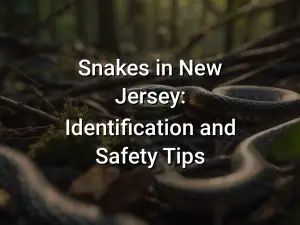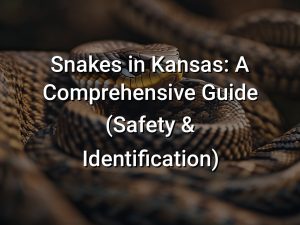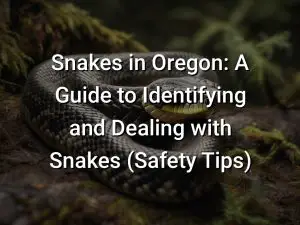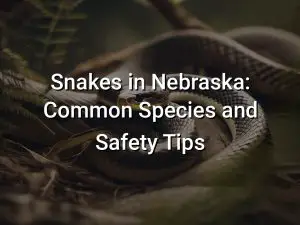Types of Scorpions in Texas: A Comprehensive Guide
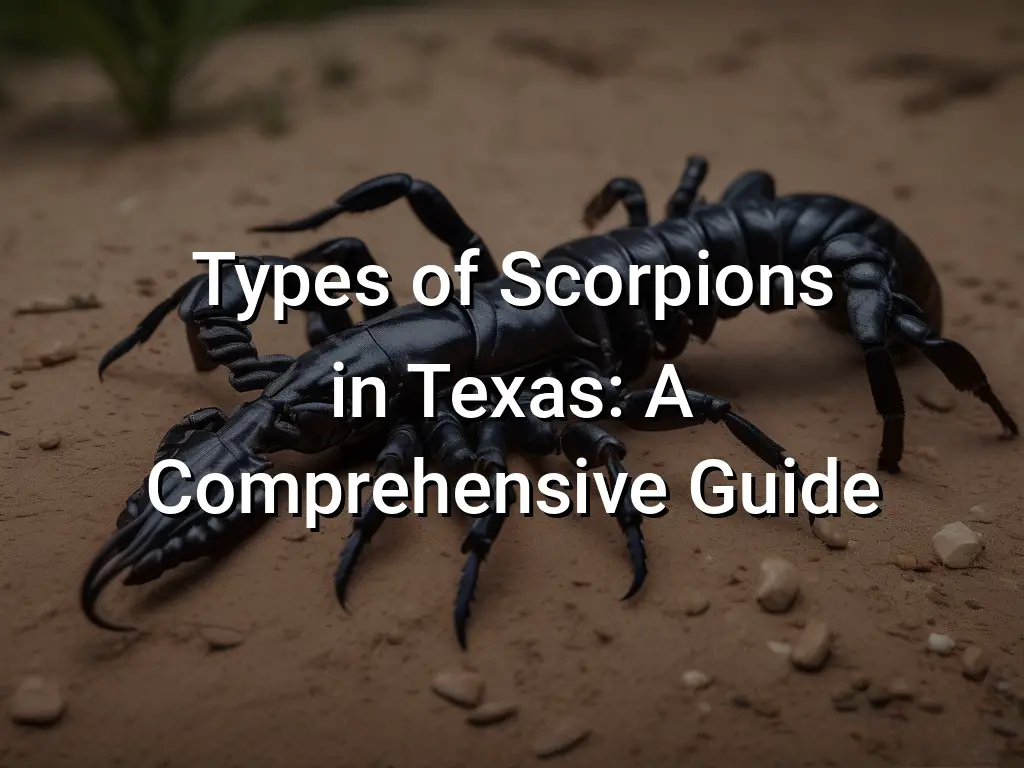
Texas, the Lone Star State, is home to a diverse and fascinating array of scorpion species. If you’re interested in learning more about these intriguing arachnids, you’ve come to the right place. In this comprehensive guide, we’ll take a closer look at the various types of scorpions found in Texas and provide insights into their behaviors, habitats, and unique characteristics.
From the venomous Bark Scorpion to the intimidating Giant Hairy Scorpion, each species has its own story to tell. Whether you’re a nature enthusiast or simply curious about the creatures that inhabit this great state, join us on a journey through the world of Texas scorpions. Let’s dive in!
Quick Links
Bark Scorpion
The Bark Scorpion is one of the most common and venomous scorpion species found in Texas. It gets its name from its preference for hiding in the bark of trees, as well as other dark and sheltered areas. These scorpions are light brown or yellowish in color and have slender bodies with long, thin pincers.
When it comes to size, the Bark Scorpion is relatively small compared to other scorpion species, with adults typically measuring around 2-3 inches in length. Despite their small size, these scorpions possess a potent venom that can cause painful stings and, in some cases, severe allergic reactions.
Bark Scorpions are nocturnal creatures, preferring to hunt for prey at night. They primarily feed on insects, spiders, and other small arthropods. Like other scorpions, they use their pincers to catch and immobilize their prey before delivering a venomous sting.
One of the distinctive features of the Bark Scorpion is its ability to climb smooth surfaces, including walls and even ceilings. This climbing ability makes them excellent climbers and allows them to access areas that other scorpions may not be able to reach.
In terms of habitat, Bark Scorpions are commonly found in rocky areas, including canyons, cliffs, and dry riverbeds. They are also known to seek shelter in human-made structures such as houses, garages, and sheds. These scorpions prefer warm and dry environments and are most active during the warmer months of the year.
While encounters with Bark Scorpions are not uncommon in Texas, they are generally not aggressive towards humans and sting only when threatened or unintentionally provoked. However, caution should be exercised when handling or approaching any scorpion to avoid potential stings.
If you suspect a Bark Scorpion infestation in your home or encounter one in the wild, it is recommended to seek professional pest control assistance to safely remove and prevent further encounters with these venomous arachnids.
Striped Tail Scorpion
The Striped Tail Scorpion, also known as the Arizona Stripe-tailed Scorpion, is a common species found in Texas. It is characterized by its yellowish-brown body with dark stripes on its tail. It has a slender body and can grow up to 3 inches in length.
This scorpion is nocturnal and usually hides during the day in crevices or burrows. It is known to be venomous, but its sting is typically not dangerous to humans, causing only mild to moderate pain and swelling.
The Striped Tail Scorpion feeds on insects, spiders, and other small invertebrates. It uses its powerful pincers to capture and immobilize its prey before injecting venom to subdue it. It is an important predator in maintaining the balance of the ecosystem.
While the Striped Tail Scorpion can be found in various habitats, it prefers dry and arid regions. It is commonly found in desert areas, rocky slopes, and can occasionally be found in residential areas.
When encountering a Striped Tail Scorpion, it is important to exercise caution and avoid provoking or threatening it. If you are stung, clean the area with soap and water, and apply a cold compress to reduce pain and swelling. Seek medical attention if symptoms worsen or if you have an allergic reaction.
Giant Hairy Scorpion
The Giant Hairy Scorpion is one of the largest scorpion species found in Texas. It is also commonly known as the Arizona Desert Scorpion. As the name suggests, this scorpion has a hairy appearance, with dense hair covering its body and legs.
The Giant Hairy Scorpion is light brown to yellowish in color and has a robust body. It can grow up to 5 inches in length, making it one of the largest scorpions in Texas. Despite its intimidating size, this scorpion is not considered highly dangerous to humans, although its sting can cause pain and discomfort.
This scorpion is nocturnal and typically hides in burrows or under rocks during the day. It comes out to hunt at night, feeding on insects and other small invertebrates. The Giant Hairy Scorpion is an ambush predator, relying on its strong pincers and venomous stinger to capture and immobilize its prey.
Similar to other scorpion species, the Giant Hairy Scorpion reproduces through live birth. After mating, the female carries the developing embryos on her back until they are born. The young scorpions ride on their mother’s back for several weeks, gradually leaving her to fend for themselves.
While encounters with the Giant Hairy Scorpion are relatively rare, it is important to exercise caution if you come across one. Avoid provoking or handling them to minimize the risk of getting stung. If stung, clean the area thoroughly and apply a cold compress to alleviate pain and swelling. Seek medical attention if symptoms persist or become severe.
Overall, the Giant Hairy Scorpion is a fascinating and unique species found in Texas. Its impressive size and hairy appearance make it an intriguing creature to observe, but it is important to appreciate it from a safe distance.
Arizona Hairy Scorpion
The Arizona Hairy Scorpion is a common species of scorpion found in Texas. It is known for its robust size and distinctive appearance. This species can grow up to 6 inches long, making it one of the largest scorpion species in Texas.
The Arizona Hairy Scorpion is typically brown or tan in color, with a segmented body and a pair of large pincers. It gets its name from the fine hairs that cover its body, which help it detect vibrations and locate prey.
Like other scorpions, the Arizona Hairy Scorpion is nocturnal and primarily feeds on insects, spiders, and other small invertebrates. It is also known to be an ambush predator, lying in wait for its prey before striking with its pincers and injecting venom.
While the Arizona Hairy Scorpion is venomous, its sting is usually not life-threatening to humans. However, it can be painful and cause symptoms such as swelling and numbness. If stung, it is recommended to seek medical attention.
This species is commonly found in rocky or desert areas, where it can hide in crevices and burrows during the day. It is also known to enter homes and structures in search of shelter and prey.
For those living in Texas, it is important to be cautious when encountering the Arizona Hairy Scorpion. It is best to avoid handling or provoking them to prevent stings. If found indoors, it is recommended to contact a professional pest control service to safely remove them.
Overall, the Arizona Hairy Scorpion is a fascinating and unique species found in Texas. Its size, appearance, and venomous nature make it an important part of the state’s ecosystem.
Banded Desert Centruroides
The Banded Desert Centruroides, also known as the Texas Cave Scorpion, is a species of scorpion native to Texas. It is one of the most common scorpions found in the state and is known for its distinctive banded coloration.
This scorpion is usually tan or light brown in color, with dark brown or black bands on its body and tail. It has pincers or claws at the front, which it uses to capture and immobilize its prey. The stinger at the end of its tail is used to inject venom into its prey or for defense.
The Banded Desert Centruroides is typically found in arid and rocky habitats, such as deserts, caves, and rocky outcrops. It is a nocturnal creature, mainly active at night when it hunts for insects, spiders, and other small prey.
Like other scorpions, the Banded Desert Centruroides reproduces through sexual reproduction. Female scorpions give birth to live young, which they carry on their backs until they are able to fend for themselves. The lifespan of a Banded Desert Centruroides can range from two to six years.
When encountering a Banded Desert Centruroides in the wild, it is important to exercise caution and avoid provoking or handling the scorpion. Although its venom is not considered highly dangerous to humans, it can still cause painful stings and allergic reactions in some individuals.
If you ever come across a Banded Desert Centruroides or any other scorpion in Texas, it is best to observe it from a safe distance and appreciate its unique beauty as a fascinating creature in the Texan ecosystem.
Texas Cave Scorpion
The Texas Cave Scorpion, also known as the Texanum Cave Scorpion, is a species of scorpion that is commonly found in caves and other dark, damp areas in Texas. It is a medium-sized scorpion, with adults ranging from 2 to 3 inches in length.
This species has a light brown to yellowish-brown coloration, with a slender body and long, thin pincers. It has eight legs and a segmented tail that ends in a venomous stinger. The venom of the Texas Cave Scorpion is relatively mild and is not considered dangerous to humans, although it can cause localized pain and swelling.
As its name suggests, the Texas Cave Scorpion prefers to inhabit dark, undisturbed places such as caves, limestone outcrops, and rocky crevices. It is a nocturnal creature, seeking shelter during the day and emerging at night to hunt for prey.
The diet of the Texas Cave Scorpion primarily consists of small insects and arachnids, which it captures using its pincers and stinger. It is an ambush predator, relying on its camouflage and stealth to capture its prey.
During the breeding season, male Texas Cave Scorpions will perform a courtship dance to attract females. After mating, the female will give birth to live young, which she carries on her back until they molt and become independent.
While the Texas Cave Scorpion is relatively common in its range, encountering one in the wild can be a rare and fascinating experience. However, it is important to exercise caution if you come across a scorpion, as they can sting if threatened or provoked.
If you are interested in learning more about scorpions in Texas, keep reading this comprehensive guide for information on other types of scorpions found in the state.
Marbled Scorpion
The Marbled Scorpion is one of the many species of scorpions found in Texas. It is known for its distinct marbled appearance, with a combination of light and dark colors on its exoskeleton.
This species is relatively small, with adults typically measuring between 1.5 and 2 inches in length. Like other scorpions, the Marbled Scorpion has a segmented body, two pincers (called pedipalps), and a long, curved tail that ends with a venomous stinger.
The Marbled Scorpion is primarily nocturnal, meaning it is most active at night. During the day, it seeks shelter in burrows or under rocks to avoid the heat. At night, it emerges to hunt for prey, which consists mainly of insects and other small arthropods.
While the Marbled Scorpion’s venom is not considered highly dangerous to humans, its sting can still be painful and may cause localized swelling and discomfort. If stung, it is recommended to clean the area with soap and water and apply a cold compress to reduce swelling. Seeking medical attention is advisable, especially for individuals who may have allergic reactions or other health concerns.
It’s important to note that the Marbled Scorpion, like all scorpions, plays a valuable role in the ecosystem as predators of pest insects. They help control populations of mosquitoes, flies, and other nuisance insects, making them beneficial to have around.
When it comes to encountering a Marbled Scorpion in Texas, it’s essential to take precautions to avoid being stung. This includes wearing protective clothing, such as gloves and closed-toe shoes, when working or exploring in areas where scorpions are known to inhabit.
As with all wildlife, it’s best to observe scorpions from a safe distance and avoid interfering with their natural habitat. If you come across a Marbled Scorpion, appreciate its unique beauty and role in the ecosystem while ensuring your safety and the well-being of the scorpion.
Striped Devil Scorpion
The Striped Devil Scorpion, also known as the Vaejovis spinigerus, is one of the most common scorpions found in Texas. It gets its name from the distinct black and yellow stripes on its body, which serve as a warning to predators.
This species of scorpion is typically small, measuring around 2-2.5 inches in length. It has a slender body and long pincers that it uses to catch and immobilize its prey. The Striped Devil Scorpion primarily feeds on insects, spiders, and other small invertebrates.
Like other scorpions, the Striped Devil Scorpion is nocturnal and is most active at night. It is adapted to the dry and arid climate of Texas and can be found in various habitats, including deserts, grasslands, and rocky areas.
While the Striped Devil Scorpion has venom, it is not considered dangerous to humans. Its sting is similar to that of a bee or wasp, causing temporary pain, swelling, and redness. However, individuals who are allergic or have a sensitivity to its venom may experience more severe reactions.
If you encounter a Striped Devil Scorpion in the wild, it is best to observe it from a safe distance and avoid provoking or handling it. If you are stung, clean the area with soap and water, apply a cold compress to reduce swelling, and seek medical attention if necessary.
Overall, the Striped Devil Scorpion is a fascinating and relatively harmless species of scorpion found in Texas. Its distinctive appearance and behavior make it an interesting creature to study and observe in the wild.
Rock Scorpion
The Rock Scorpion, also known as the Striped Rock Scorpion, is one of the scorpion species found in Texas. It is known for its distinctive striped tail and its ability to live in rocky habitats.
These scorpions are typically smaller in size, measuring about 2-3 inches in length. They have a light brown or tan color with dark brown or black stripes on their tail, which gives them their name.
The Rock Scorpion is a burrowing scorpion and can commonly be found in rocky areas, such as rocky hillsides, cliffs, and boulder piles. They prefer dry habitats and are known to hide under rocks during the day to avoid the heat.
Although the Rock Scorpion has venom, it is not considered dangerous to humans. Its sting is similar to a bee sting and is usually only harmful to individuals who are allergic. However, if stung, it is recommended to seek medical attention, especially if experiencing severe pain, swelling, or other allergic reactions.
When it comes to reproduction, the female Rock Scorpion gives birth to live young, rather than laying eggs. The young scorpions will then climb onto the mother’s back and stay there until they molt and become independent.
Overall, while the Rock Scorpion may be intimidating in appearance, it is typically not a threat to humans and plays an important role in the ecosystem by controlling the population of insects and other small arthropods.
Round-tailed Scorpion
The Round-tailed Scorpion (Vaejovis scalaris) is a small scorpion species found in the southern parts of Texas, including the Rio Grande Valley and the Big Bend region. It is one of the most common scorpions in Texas and can also be found in neighboring states like Arizona and New Mexico.
The Round-tailed Scorpion typically measures between 2.5 to 3 inches in length and has a light tan to dark brown coloration. It has a slender body with long, thin pincers and a tail that curls above its back. Despite its small size, the Round-tailed Scorpion possesses a venomous stinger that it uses for catching prey and defending itself.
These scorpions are primarily nocturnal hunters, meaning they are most active during the night. They feed on insects, spiders, and other small arthropods. The Round-tailed Scorpion is commonly found in desert habitats and can be seen under rocks, logs, or in crevices during the day.
While the Round-tailed Scorpion is venomous, its sting is generally not considered dangerous to humans. The venom can cause mild pain, swelling, and redness at the sting site, similar to a bee or wasp sting. However, severe reactions are rare, and medical attention is usually not required unless an individual has an allergic reaction to the venom.
If you encounter a Round-tailed Scorpion in Texas, it is best to leave it undisturbed. These scorpions play an important role in controlling insect populations and are fascinating creatures to observe from a safe distance.
Conclusion
Texas is home to a diverse range of scorpion species, each with their own unique characteristics and habitats. It’s important to be aware of the types of scorpions that can be found in Texas to ensure your safety and to know what to do if you come across one.
Remember, most scorpions are not aggressive and will only sting if they feel threatened. If you encounter a scorpion, it’s best to leave it alone and give it space. If you are stung, seek medical attention if necessary, but most stings from Texas scorpions are not life-threatening.

